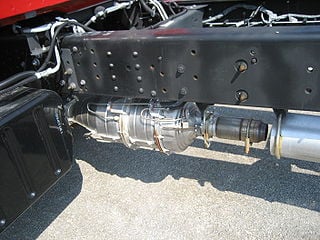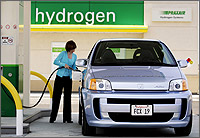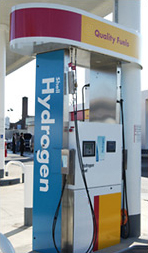Researchers in Belgium have created a device which can convert polluted air into energy. That’s just one of the device’s capabilities. The other is its ability to make air pollution harmless. The catch: light from the sun is needed to facilitate both processes.
“‘We use a small device with two rooms separated by a membrane’, explains professor Sammy Verbruggen (UAntwerp/KU Leuven). ‘Air is purified on one side, while on the other side hydrogen gas is produced from a part of the degradation products. This hydrogen gas can be stored and later used as fuel, as is already being done in some hydrogen buses, for example,’” as cited on the ScienceBlog in “New technology generates power from polluted air.”
This extremely encouraging new development to mitigate at least some types of pollution in the air is very exciting.
Imagine the implications in industry, transportation, energy production, heating, agriculture, in the home – anywhere where polluted air is a problem.
This air purifying/energy generating device is, without a doubt, truly revolutionary, extraordinary! But, should it be a substitute for finding ways to reduce the levels or concentrations of pollution in air coming from industry, transportation, etc.?

As I see it, the device itself is sort of like a car’s catalytic converter with one key difference: this catalytic converter produces hydrogen gas. That the hydrogen gas can be stored means it can be utilized later. But, it also means that the gas can be used to power motor vehicles that use hydrogen as a fuel source.
So, imagine a 50/50 mix consisting of 1 hydrogen fuel-cell vehicle on the road for every 1 motor vehicle powered using an internal-combustion engine.
Say, for example, an internal-combustion-engine-powered vehicle is outfitted with the above-mentioned converter device which takes pollutants from exhaust that can be converted and converts such into hydrogen and as opposed to it being released into the atmosphere is instead stored in a tank onboard.

In turn, hydrogen fuel-cell vehicles in need of a hydrogen resupply could then refuel at the same fueling station filling up on the hydrogen that was produced via the onboard converter device in question.
Not only would there be another source for the production of hydrogen gas, but because fewer motor vehicles on the road would be operating that are equipped with internal combustion engines and more incorporating hydrogen fuel cells would be in use, an overall reduction in air pollution from transportation would result.
This would be of tremendous benefit to society as a whole and to human health especially when one considers that vehicle miles traveled are, once again, on the increase.
The key here is if these converter devices can be added without appreciably adding to the price of the vehicle incorporating their use. And, this is just one possible application.
There is a downside, however. In its current state of development, if applied as is, it would be less effective or maybe ineffective at nighttime or under extremely cloudy and, presumably, smoggy conditions. So, the question becomes: would people/consumers be willing to pay for something that operates only part of the time? In other words, would people/consumers feel comfortable with the notion of putting out capital for a capability (technology) whose availability would, presumably, be less than 100 percent?
On the other hand, if, say, for example, the part of sunlight that makes the device fully operational, what if that was ultra-violet based? Well, in that case, creating a device which could give off ultra-violet light in the absence of that supplied by the sun could suffice. It’s just a thought.
I trust we will be hearing more about the pollution-to-energy device as the processes involved evolve. The presumption here being they (the processes) will.
Top image above: Dana60Cummins
– Alan Kandel

Great article.
Love it.
Let’s see what we can do to promote this and help reduce the carbon footprint that’s stomping us to bits.